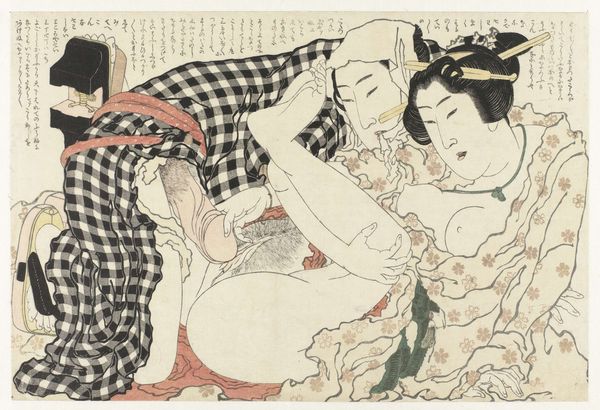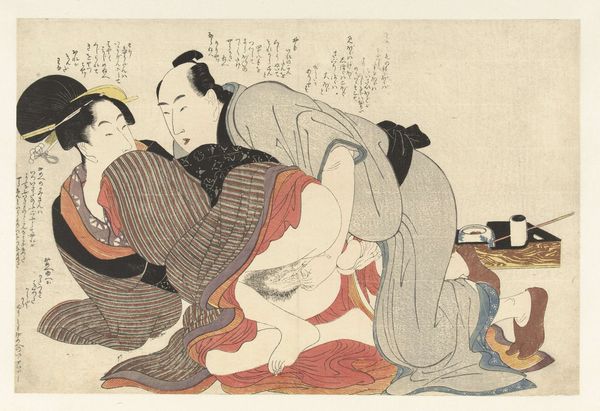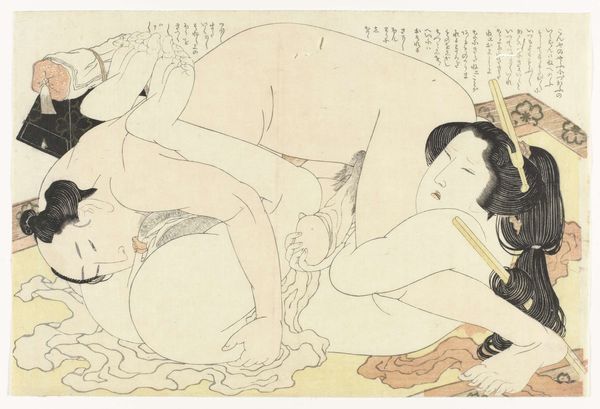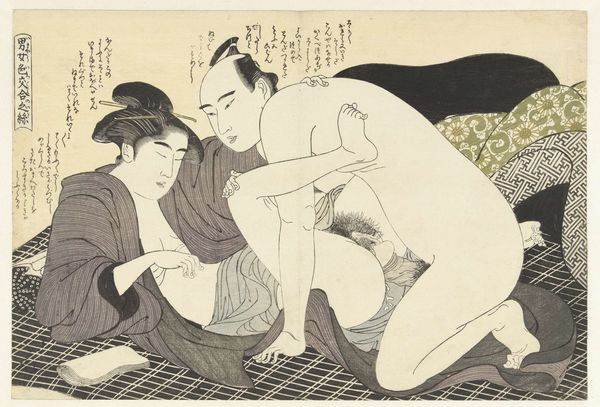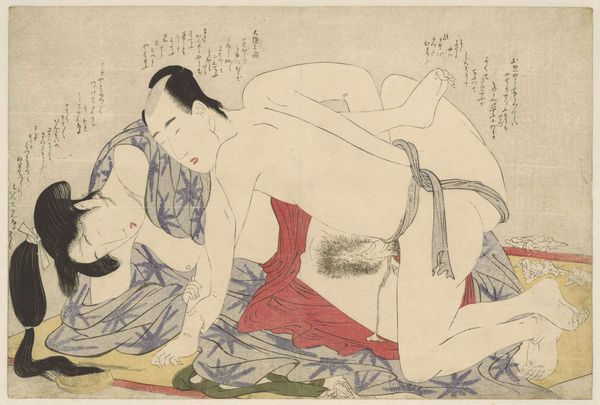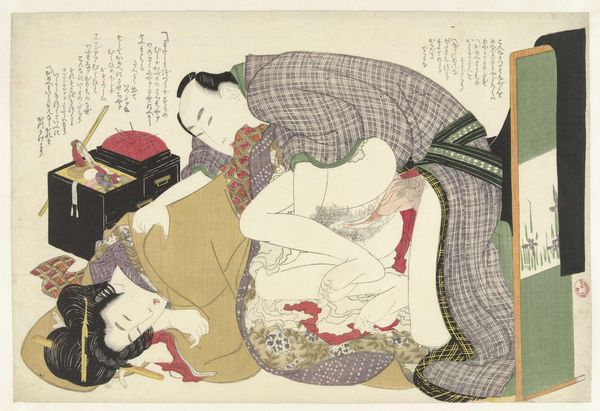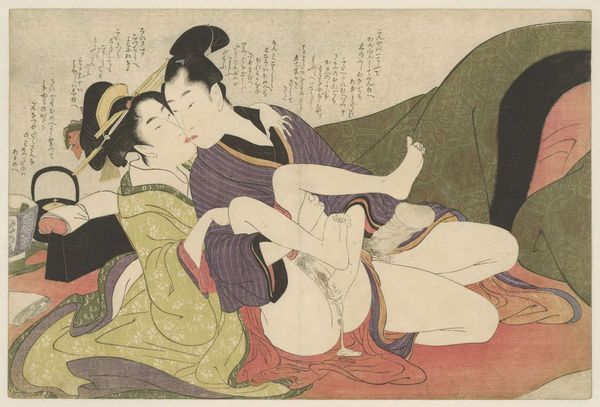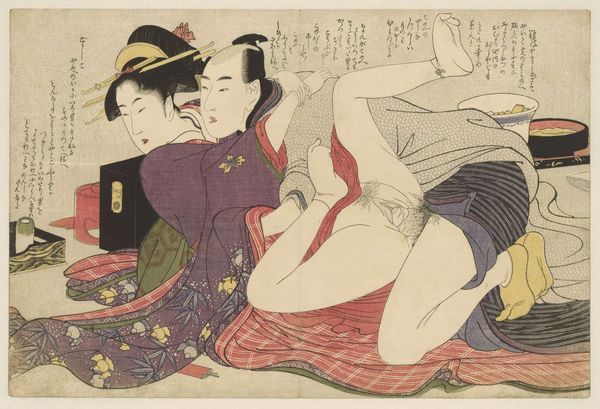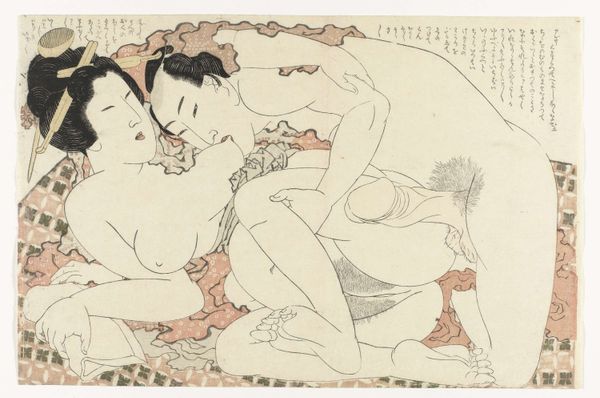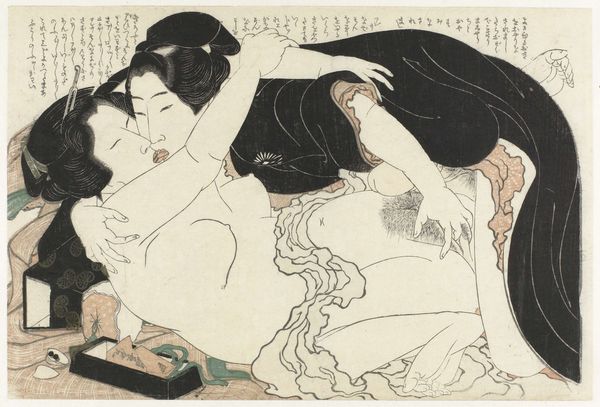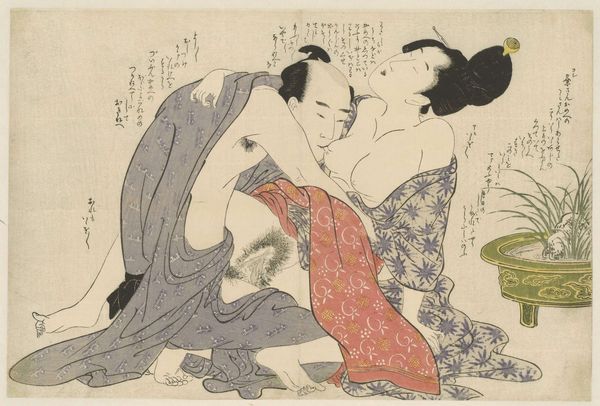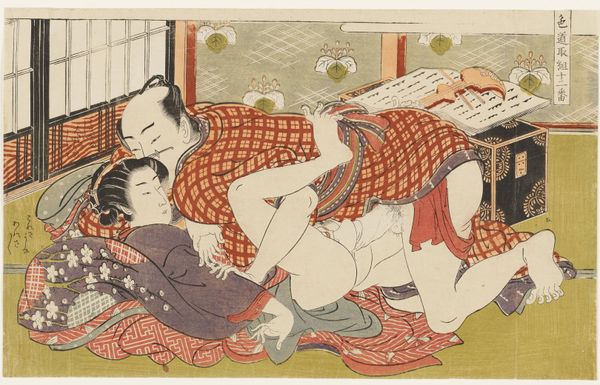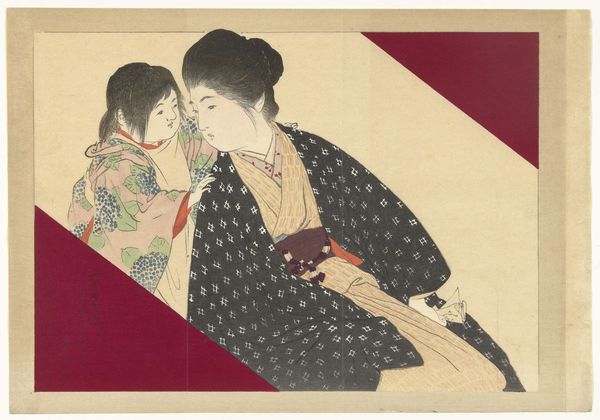
print, woodblock-print
#
mother
# print
#
asian-art
#
ukiyo-e
#
woodblock-print
#
watercolour illustration
#
genre-painting
Dimensions: height 257 mm, width 385 mm
Copyright: Rijks Museum: Open Domain
Curator: What a sweet moment. Look at how she holds her child so tenderly. Editor: Indeed. We are standing before “Woman with Child,” a woodblock print made sometime between 1815 and 1823 by the celebrated Japanese artist Katsushika Hokusai. It's currently held in the Rijksmuseum. Curator: Ukiyo-e prints always grab my eye, that almost uncanny ability to capture everyday life with such beautiful lines and flat colors. It's like a snapshot of motherhood. But she also looks exhausted, doesn’t she? Editor: Yes, absolutely. This piece really captures something vital. We can interpret the work as reflecting on the representation of women during this era. Hokusai, known for his landscape prints, especially Thirty-Six Views of Mount Fuji, here gives us a glimpse into domestic life and the burdens, perhaps, carried disproportionately by women. Look how her kimono drapes—suggesting she's possibly resting or recovering. Curator: The way the baby clings to her, it’s universal, timeless even! Motherhood is beautiful but undeniably physically demanding. Hokusai shows us the unglamorous reality of nurturing a small human. Editor: Right, and that depiction of the infant clinging to the mother's robes offers layers of analysis on dependency, care work, and social expectations that confine women to domestic spaces, all central themes in feminist thought and art. And consider also the Edo period societal structure; we're perhaps looking at something more nuanced than just a scene of familial affection. Curator: It’s interesting how art manages to weave multiple layers together isn't it? I think Hokusai found the extraordinary within the ordinary. We can certainly project whatever meaning we wish onto the subject matter based on current understandings, and that’s half the fun. I keep returning to how tired she looks though… Editor: Precisely. I appreciate how Hokusai compels us to reflect not just on aesthetic beauty, but on the conditions and contexts in which such beauty is produced and experienced. Curator: It feels profoundly human, doesn't it? Editor: It does indeed.
Comments
No comments
Be the first to comment and join the conversation on the ultimate creative platform.
